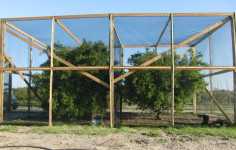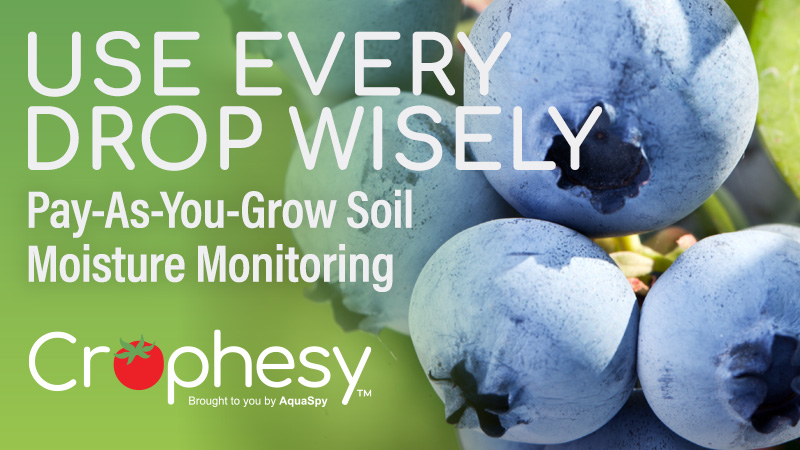Probing Pollination Potential For US Early Pride

The Fallglo tangerine (Bower x Temple) has been a key variety for Florida citrus nurseries and packinghouses for the last quarter century. Fallglo’s strengths are its early maturity and size. Additionally, the Fallglo performs well in all of the citrus producing regions. However, today’s market is increasingly committed to seedless and low-seeded tangerines. The Fallglo’s seed count can range from 20 to 40. Florida clearly needs another early-season option to satisfy demand for large juicy Florida tangerines. Enter the US Early Pride.
The US Early Pride is a low-seeded mutant that was produced by irradiation of Fallglo budwood. US Early Pride fruit resemble the Fallglo in almost every way, except that its average seed count approximates two per fruit. Many are completely seedless, and there is a great deal of optimism expressed about the market potential of the US Early Pride tangerine.
As mentioned in previous “Citrus Nursery Source” articles, New Varieties Development & Management Corp. (NVDMC) has worked closely with USDA and the other citrus producing states to commercialize the US Early Pride. USDA filed for a patent, and NVDMC has been awarded an exclusive license to commercialize, in cooperation with the other states. The final draft of the master license agreement is close to completion. Nurseries already under agreements for budwood increase for trials will have an opportunity to convert to the commercial program. It is expected that more nurseries will elect to participate once the license process is complete. Growers already under trial agreements will be able to sign commercial agreements and new growers will be added.
Seeking Solid Ground
The key question remaining to be answered about US Early Pride is its ability to set fruit in solid blocks. Nurseries and growers need to know whether a pollinator is needed for fruit set, as is true with the Sunburst. Dr. Greg McCollum, USDA-ARS, has been researching this issue and has provided some preliminary results. As there are very few mature trees of US Early Pride, studies are limited to the A.H. Whitmore Farm near Leesburg.
A characteristic of some irradiation-induced seedless or low-seeded citrus mutants is their production of pollen with poor viability. US Early Pride flowers have consistently produced less abundant and less viable pollen than does Fallglo. Although US Early Pride has consistently produced good crops of seedless or low-seeded fruit in mixed plantings, knowledge of pollination requirements of US Early Pride is not complete.
Buzzworthy Research
Dr. McCollum initiated experiments to determine: 1) if US Early Pride requires a pollenizer to produce economically viable yields; and 2) alternative pollen sources for US Early Pride. To determine if US Early Pride requires a pollenizer, trees were enclosed in screen-covered cages to exclude alternate pollen and bees were placed in the cages to ensure pollination with US Early Pride pollen. To determine alternate sources of pollen for US Early Pride, flowers on non-screened trees were hand pollinated with pollen from 11 different sources (see chart below). USDA has observed some fruit set on the screened US Early Pride trees, suggesting self compatibility. However, it is too early to conclude that a pollenizer would improve production for US Early Pride.
| Pollen Source |
Number of Pollinations |
Percentage Remaining |
| Temple | 15 | 66.7 |
| Minneola | 125 | 90.4 |
| Early Gold | 12 | 66.7 |
| MidSweet | 56 | 82.1 |
| Ortunique | 21 | 76.2 |
| Fallglo | 26 | 88.5 |
| Flame | 10 | 80 |
| Murcott | 52 | 71.2 |
| Hamlin | 33 | 90.9 |
| Sunburst | 92 | 87 |
| Orlando | 45 | 84.4 |
| Total | 487 | 80.4 |
Pollen sources, numbers of pollinations, and percentage of fruit remaining as of the first week in May.
US Early Pride flowers pollinated with each of the 11 alternate sources have all had good fruit set with little drop at this point. Quantification of fruit production, whether on caged trees or resulting from hand pollination, will be required to make meaningful conclusions for this year’s experiment and additional years of experiments will be required for definitive understanding of the pollen requirements for US Early Pride. Dr. McCollum further offered: Based on observation that US Early Pride has consistently produced good crops of seedless fruit in mixed plantings and the good fruit set from hand pollination, it is recommended US Early Pride not be planted in large isolated blocks without additional data.
The reality of the situation is this: Growers are interested in the market potential of US Early Pride. They are eager to bring this variety into production. Commercial licensure is forthcoming. Growers wanting to plant early — before more data is available — should consider an interspersed pollen source for US Early Pride that is known to overlap the Fallglo bloom (which is the same as US Early Pride) in the same growing area.










